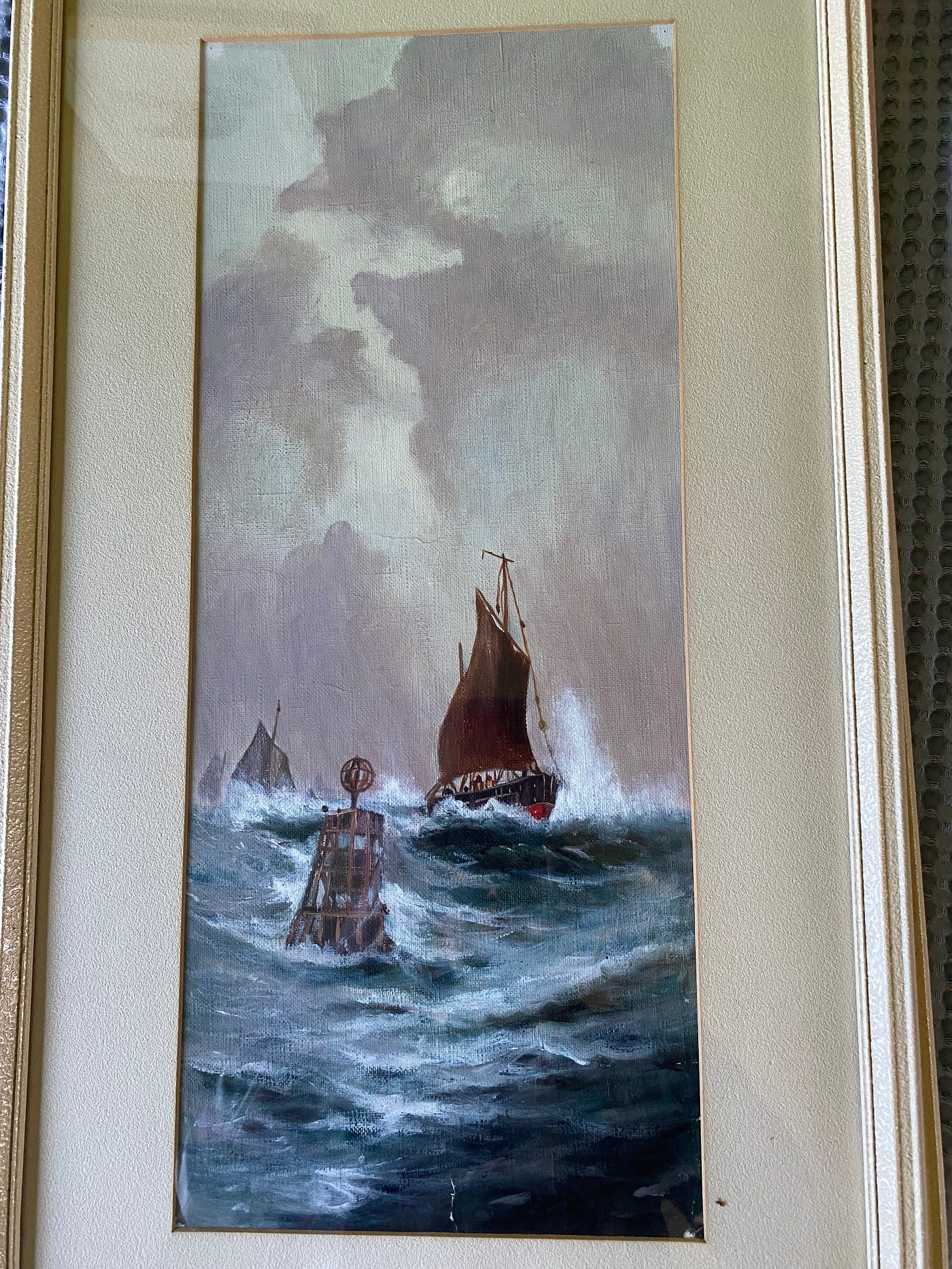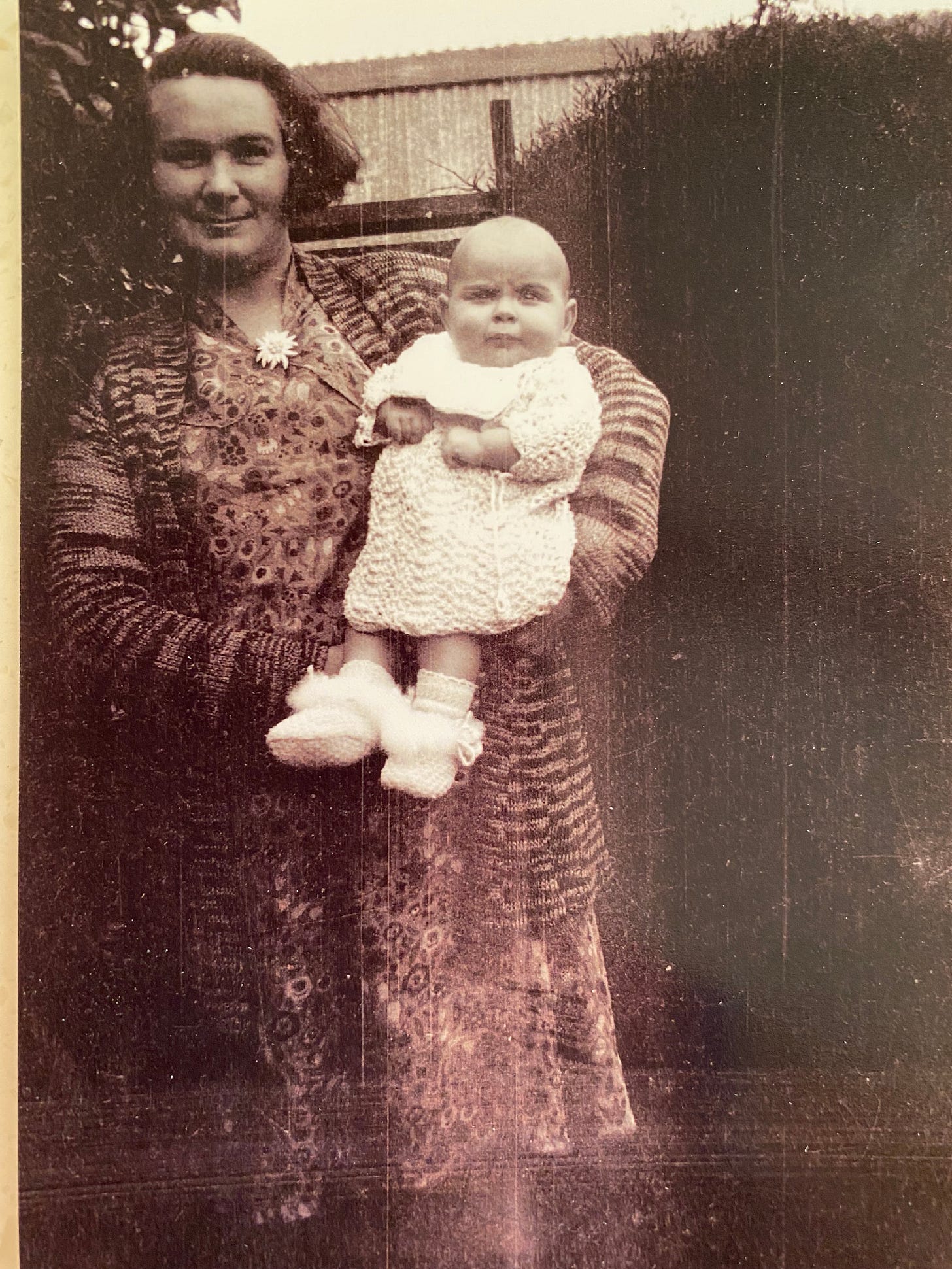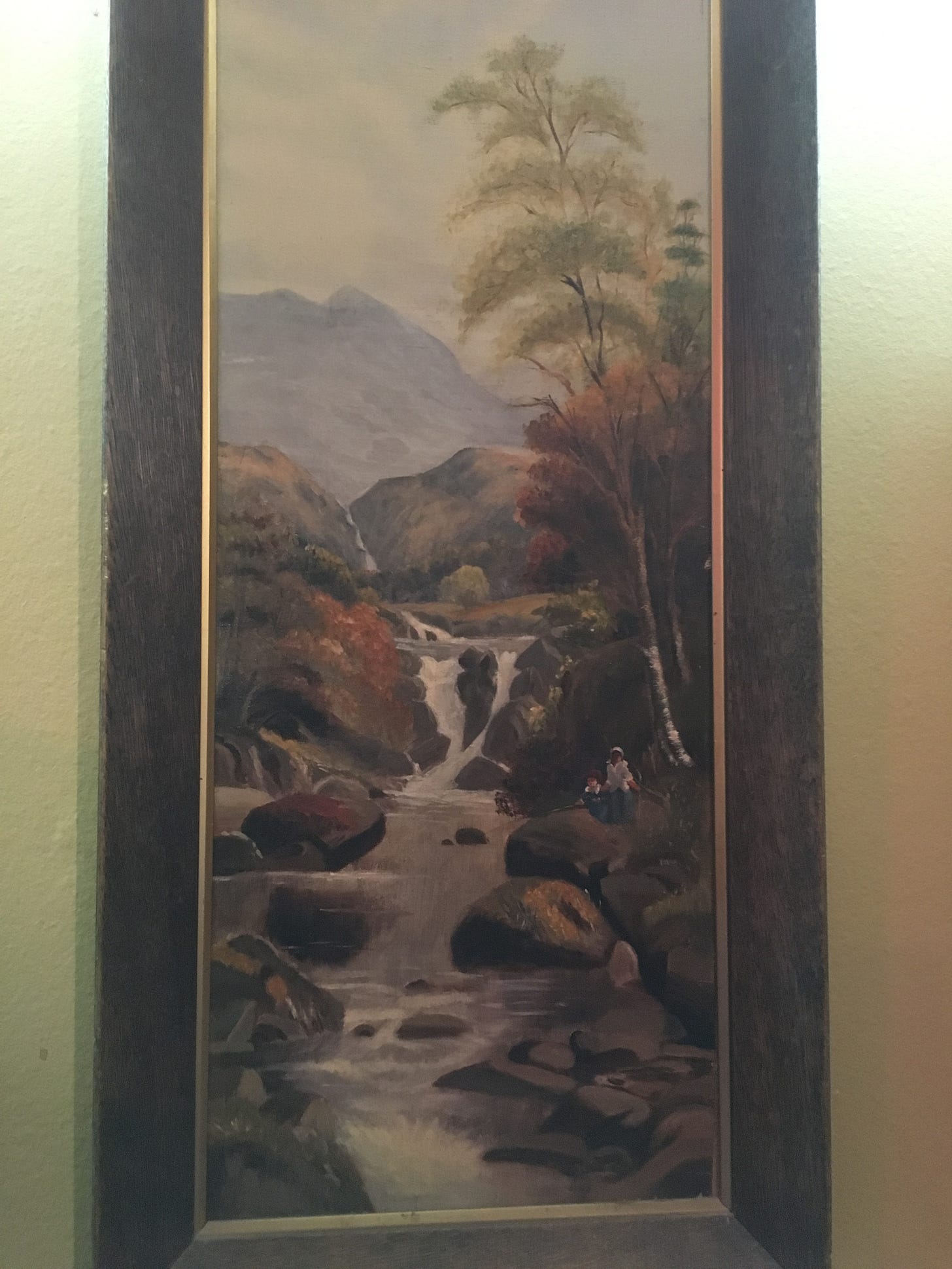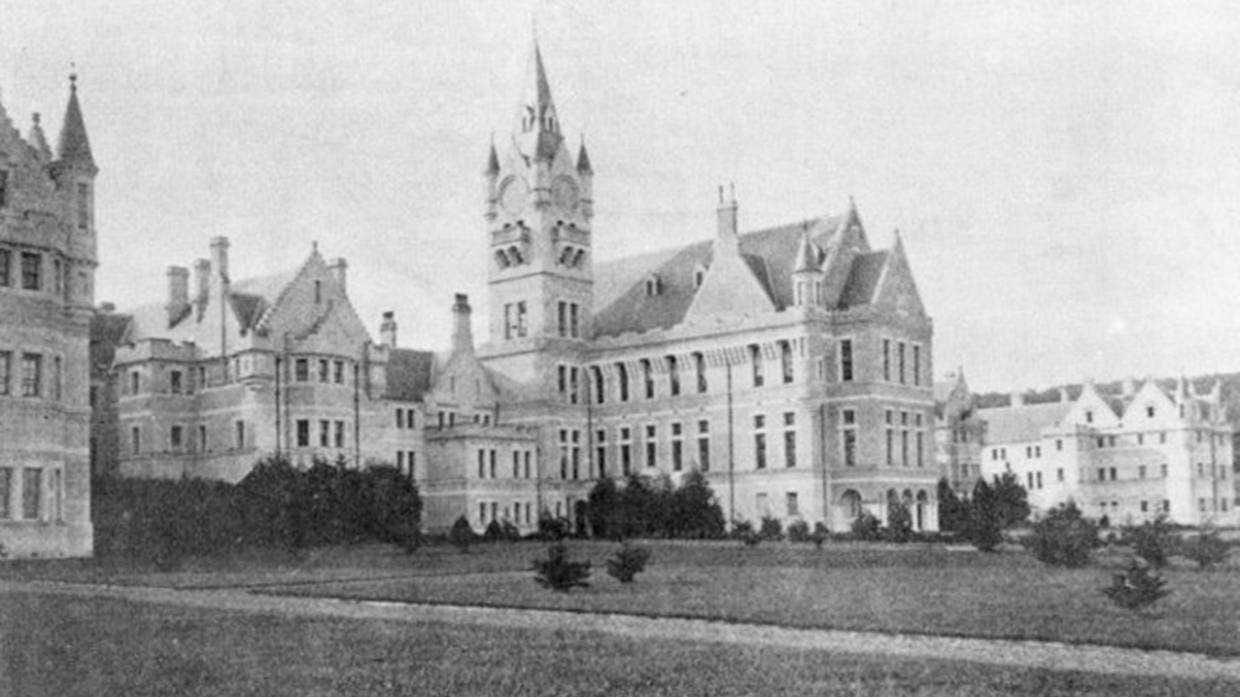Liz Innes never knew her grandmother, and her late mother never really mentioned her.
Her name was Alice Holmes, and she died aged 46.
Several of her paintings hang with pride at Innes’ home in Oxford, North Canterbury, they show sailing boats under a threatening sky: in one the water is calm - in the other heavy swells rise and fall.
Her grandmother was not only a talented painter, but was also a dressmaker of some note, with the ability to replicate any dress without any patterns.
Holmes, who lived in Invercargill, had three children: a daughter (Innes’ mother) and two young boys, who were aged 13, four and almost two, at the time of her death on 10 December 1944, aged 46.
‘‘It was a pretty horrendous experience for mum.’’
Innes’ mother died seven years ago, aged 84, from Alzheimers, but rarely talked about her late mother.
Alice Holmes, aged 33, holds her baby daughter.
But Innes did learn that her grandmother possibly died of pneumonia, in a bed situated in a corridor of a building.
And that building?
Seacliff Lunatic Asylum, a former psychiatric hospital which once had 500 beds.
All that remains of the former asylum, located about 30km north of Dunedin, are some stone remnants and a few smaller buildings in private ownership.
A painting by Alice Holmes.
The Robert Lawson-designed building was the largest commissioned in the country when it opened in 1884, but was plagued by issues, including landslips, before the fatal fire of December 8, 1942.
That fire would claim the lives of 37 women.
It was a national disgrace, but that has been compounded further by official records being sealed, including other patients.
Innes wanted to know some key basic questions about a family member, including why was she admitted, for how long, and what did she died of?
But she will have to wait.
Those records, get this, are sealed for 100 years after a patient’s death.
That means Innes, 60, will have to wait until 2044.
While documentation for Holmes wasn’t forthcoming, Innes had tried to get her own answers from official sources, visited the site whenever she visited Dunedin: ‘‘because I want to get a feel for the place’’.
‘‘I imagine my grandmother there . . . and all those other people.’’
Holmes was buried in Invercargill’s Eastern Cemetery two days after her death.
‘‘In loving memory of Alice May. Beloved wife of Percy Arthur Holmes. Died 13th Dec 1944,’’ the headstone reads.
Her husband, Percy, was buried in Timaru and ‘‘that probably says it all’', Innes said about the couple’s relationship.
The death of Holmes still impacted her and her wider family, and she wanted answers well before 2044.
‘‘It just doesn’t seem right.’’
I got the following reply from Archives NZ holdings and discovery director Polly Martin:
The Public Records Act 2005 (PRA) requires public archives held by Archives New Zealand to be openly accessible unless there are good reasons to restrict access.
Under the PRA, access restrictions are not set by Archives New Zealand. Restrictions are set by the government agency that originally created the records, or by the successor agency, in this case the Southern District Health Board.
Government agencies setting access restrictions must have regard to the Chief Archivist’s guidance and any other legal requirements, but the government agencies make the decision on setting access restrictions.
Access to public archives that relate to Seacliff patients is determined by access authority AA940. This specifies that “All public archives containing health information about identifiable individuals are restricted for 100 years from the date of the last paper or last entry in the record” in order to protect personal privacy.
Archives New Zealand understands the frustration people may feel when unable to access archives about a family member who has passed away while in the care of a state institution. We recommend approaching the government agency concerned to request that access restrictions be lifted. Archives New Zealand assists people with this process and has guidance on its website: Access restrictions.
Essentially Innes will have to make a request to the chief executive of the Southern DHB (who is stepping down next month . . . ) to request the release of the information.
But the SDHB recommended lodging an OIA.
‘‘We take a case-by-case approach on historic files where sensitive information may be contained within the documentation, and our team takes care to work directly with the requester.’’
I’ll keep you posted.
I’d like to do a quick shout-out to Christian Kasper, of Dunedin, who helped artist Dick Frizzell organise an online art auction to raise money for kids impacted by Russia invading Ukraine.
A sketch from Michael Hill. Artist.
And the amount? NZD $100,000 (€60,000).
Top work
When an unidentified number calls my cellphone I always brace myself for bad news.
But not this Monday.
This caller had a Kiwi/Aussie accent, and was very happy. CRISIS AVERTED.
Turns out she was the sister of Little John.
You remember him, how could you forget?!
Well, Little John, who lives in a cave near Outram, had a special visitor this week.
His sister, who he hadn’t seen for 25-years, came all the way from Perth.
‘‘I nearly hugged him to death.’’
You can read the story here.
Little John talks to his Perth-based sister, who he hadn’t seen in 25 years. Photo: Supplied
I had a great tip this week about a gang member rushed to hospital, after a bullet managed to miss his vital organs after a botched ‘hunting incident’.
Local police were tight-lipped over the incident, and I was referred to their media centre.

They replied with the blandest statement of all time:
Yesterday Police received a report of person who presented at Dunedin Hospital at around 6pm with a firearms-related injury. Police attended and spoke to the person, Police enquiries are ongoing.
Sigh.
Anyway.
So this is going to be a big week for the Otago Regional Council, after confirmation that chief executive Sarah Gardner has resigned.
She announced her resignation today (Wednesday), and will be gone in a week.
I found this recent clip on YouTube from Delta. They do a great job.
My Tweet of the Week goes to:

WHERE. ARE. THEY?
And here is quite possibly the best appearance by a chainsaw in a New Zealand music video.
Have a great week.










‘‘We take a case-by-case approach on historic files where sensitive information may be contained within the documentation," sure, but 100 years? Sensitivity has dwindled, mental illness is no longer shame on a whole family indicative that all are tainted. Homosexuality isn't Sin leading to burning in the Eternal Fires of Hell. The "feeble minded" (Downs, autistic...) no longer have to be hidden in institutions, out of sight lest their siblings' marriage prospects be handicapped out of fear of "inferior blood" cursing any offspring. It's the opposite now, knowing of inheritance may (example - the Maori extended family with strong susceptibility to stomach cancer) lead to descendants' opportunity to take pre-emptive action. Some old rules need very quick revision, not dithering around with time-wasting OIA piecemeal consideration.